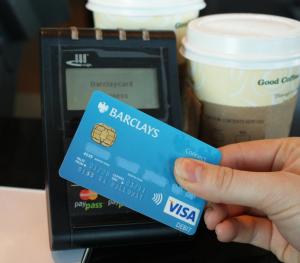Barclaycard: Contactless to Reach ‘Big Tipping Point’ Next Year

UK-based Barclays bank and its credit-card arm, Barclaycard, will have issued a total of 20 million contactless debit and credit cards by the end of 2011, predicted James McDonald, head of strategic innovation programs for Barclaycard, who said he believes there will be “many millions” of contactless transactions in the United Kingdom next year.
The bank, which is almost single-handedly driving the UK’s contactless rollout, will have issued a total of 12 million debit and credit cards by the end of this year, accounting for nearly all contactless cards on issue in the UK by year's end, McDonald said. But he expects such other British banks as Royal Bank of Scotland, HSBC and Lloyds TSB to become more active in the rollout by next year, for a total 30 million British contactless bank cards issued by the end of 2011. Barclays and Barclaycard to date have issued a combined 7 million debit and credit cards since launching the rollout in September of 2007.
McDonald, speaking this week at the Contactless Cards and Payments conference in London organized by SMi, also predicted merchant acceptance would “dramatically increase” over the next 18 months. With more and more contactless cards in circulation, merchants, including big supermarket chains, are becoming interested, said McDonald, who works for Barclaycard’s merchant acquiring business.
“Those conversations (with merchants) are very different now than they were last year,” he told the conference. “We do believe large retailers will follow. There is a big tipping point coming up next year.”
But he declined to name large merchants he believes will accept contactless payment by next year.
There are about 24,000 merchant locations equipped to accept contactless payment in the UK, from dual-interface EMV cards with either a Visa payWave or MasterCard PayPass application onboard. While only a quarter of these locations are in London, they have accounted for 82% of transactions to date, McDonald said.
Most of the transactions are with small- to medium-size quick-service food or coffee chains, such as EAT, Caffè Nero and Pret A Manger. The only major chains accepting contactless so far, such as Boot’s retail pharmacies, have barely dipped their toes in the water. They are only accepting contactless on a trial basis.
He predicted supermarket chains will begin accepting late this year or early next year.
He did not name the chains, but contactless-payment backers are hoping such major chains as Tesco and Sainsbury’s take the plunge. Any adoption by the supermarkets would likely begin slowly.
McDonald said transactions overall have averaged £4.5 (US$6.75) compared with £2.50 to £3 average cash transactions, indicating consumers spend more with contactless cards. But there were only some hundreds of thousands of contactless transactions recorded in the UK in 2009 and transactions only ran into the several tens of thousands in 2008, said McDonald. They should increase to millions this year, before starting to ramp up in 2011.
He predicted by 2012, there would be more than 50 million contactless cards on issue from all banks, including Barclays' and Barclaycard's entire combined base of 25 million cards. There would be hundreds of millions of transactions, including some from NFC phones, with about 30% of retail outlets in the UK covered, he predicted. By comparison, in the United States, a much larger market, banks have issued more than 200 million much cheaper non-EMV contactless cards during the first five years of their rollout, which began around 2005. There are roughly 75,000 contactless merchant locations at present, or less than 2% of card-accepting merchant outlets covered. The card numbers include replacement cards.
By 2015, all the banks in UK would be issuing contactless, totaling more than 100 million cards, with billions of transactions, predicted McDonald.
The rosy projections rely in part on Transport for London accepting payment directly from EMV bank cards. That could begin on buses in London and also by bus operators in Manchester as early as next year and expand to the London Underground in 2012, said McDonald.
While not out of the realm of possibility, it is unlikely Transport for London would be accepting EMV payments, even on buses, by next year, Lauren Sager Weinstein, head of Oyster development for Transport for London, told NFC Times.
The giant transport authority wants to accept bank payment for most of the fares it now collects on 8,000 buses and on its large Underground network and other modes of transport, and a move in that direction looks promising. But the authority has not yet made a final decision, she said. If it goes ahead with the plan to accept open-loop payment of fares, buses, which charge flat fares to ride, would likely accept contactless EMV cards before the Underground, which has a more complex fare structure.
McDonald also reaffirmed Barclaycard’s intention to launch NFC-based mobile payment and related services as part of its partnership with mobile operator Orange UK. The parties have indicated they would launch before the end of the year, but McDonald did not offer a launch date.
And the bank will continue to promote contactless, said McDonald, who played the latest of Barclaycard's popular television commercials to conferees. The ad spot shows a consumer on a rollercoaster swooping through the London skyline, slowing long enough for a quick tap of his contactless Barclaycard credit card for a food purchase. The commercial and ad time cost £2 million to £3 million.
“There will be a lot more of them,” he said. “At Barclaycard, we do believe the industry will follow.”












